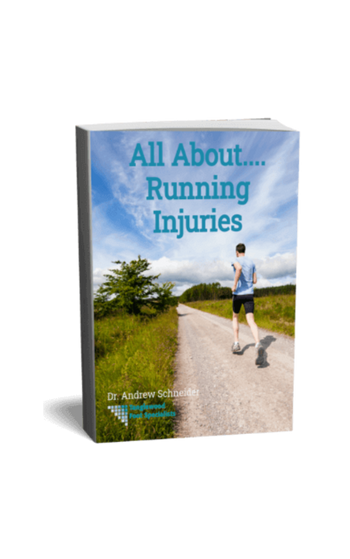The weather is starting to get cooler. Even here in Houston, TX, we have days with cold weather and, yes, sometimes we experience freezing conditions. Don't just assume it is business as usual! Although this weather forces many runners indoors onto tracks and treadmills, some prefer to remain outdoors. Want to keep training outside and enjoy those cold weather runs? Here's what you need to do!
Safety Tips for Cold Weather Runs ![man running on dirt path in winter]()
There is nothing wrong with running in cold conditions. However, cooler temperatures can present your feet with unique challenges and injury risks. So, if you're determined to keep training outdoors all year long, here are our top tips for running in cold and wet conditions without suffering foot pain or sustaining an injury:
1) Wear quality waterproof socks
Everyone knows that shoes can make a huge impact on the health of your feet, but socks are just as important. Make sure that you wear a good thick sock that will keep your foot warm. Avoid thin cotton socks that offer little insulation especially since, if they get wet, they won't don't help get rid of the moisture on your feet fast enough. Your best bet will be to choose a moisture-wicking pair with decent thickness, keeping your feet warm and dry on cold weather runs, even if rain becomes an issue while you're training.
2) Bring an extra pair of socks
If you are going to run outside in cold or wet conditions, then you consider bringing an extra pair of socks with you. That way, if your feet get so wet that your moisture-wicking material isn't cutting it anymore, you can put the new pair on immediately. This will ensure that your socks are fresh and dry, reducing your risk for rubbing, blisters, fungal infections and more.
3) Try using waterproof shoes, too
Many shoe companies now make sneakers that are either partially or completely waterproof. They can help keep your feet dry in all kinds of conditions, again helping prevent blisters from forming. Just be sure to prioritize fit and comfort above all else. Because, even if your feet stay dry on cold weather runs, you won't avoid pain or injuries if the fit of your sneakers is less than ideal.
4) Try to stay indoors as long as possible before the run
The longer you stay outside in cold weather, the greater chance you'll have of getting frostbite on your toes or on other areas of your body. As such, you should try to limit the amount of time you spend outside if you're planning a cold weather run. If it's raining or icy, try to run later in the day. But if you're running in a race and can't change your start time, try to find a warming tent you canstand in for as long as possible before the start of your race.
5) Avoid running in slush or puddles
This should probably go without saying, but when you're running in cold weather, do everything possible to keep water off your feet. Look where you're going and try to steer clear of puddles. Then, if you do step in some icy water, stop and change into that dry pair of socks as soon as it's safe for you to do so.
6) Plan your route
When you're running in cold weather, try to find paths that are well lit to accommodate for shorter daylight hours, reducing your risk for slips, trips and ankle sprains or fractures. Also, try to avoid routes that will take you over bridges, as these surfaces may ice over sooner than others, increasing your likelihood of falling.
7) Warm up and cool down
Cold weather runs mean your muscles will also be cold when you start training. That could lead to tightening, increasing your risk for injury. To protect yourself and prevent problems, make sure to warm up and cool down before heading out for your run, safely preparing your body for the workout to come.
8) Address injuries right away
Of course, this tip applies to runs taken at any time of year. But it's still an important reminder. If something hurts when you're running, or if you experience lingering pain after a run that doesn't resolve in a day or two, that's a sign of a problem. So, unless you want to be sidelined until spring time, it's important to step[ training right away and make an appointment to come into the office, either by calling us at 713-785-7881 or by following this link. When you come into our Houston podiatry practice, Dr. Andrew Schneider will conduct a thorough examination. He'll rule out or diagnose any injuries, providing you with a plan to resolve discomfort and get you back into training as soon as it's safe for you to do so!















